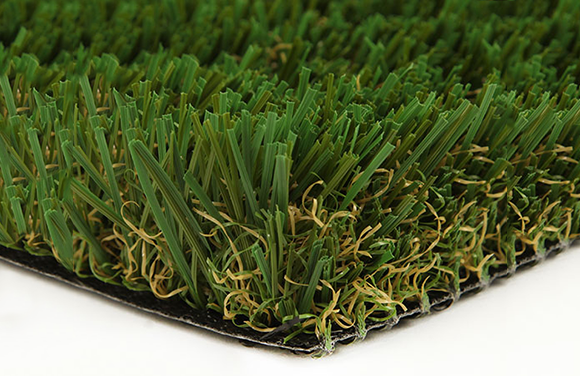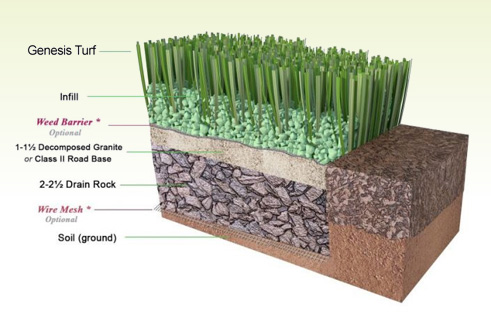Long-Lasting Arizona Artificial Turf for Residential and Business Applications
Long-Lasting Arizona Artificial Turf for Residential and Business Applications
Blog Article
Delve Into the Environmental Benefits of Opting for Synthetic Grass Solutions
The fostering of artificial lawn remedies presents a compelling opportunity to attend to pressing ecological obstacles. By substantially minimizing water use and minimizing the application of dangerous chemicals, these choices not only advertise lasting landscaping but additionally protect neighborhood ecosystems. In addition, the reduced carbon footprint connected with lowered upkeep tasks adds to a much more lasting strategy to land administration. Nevertheless, the ramifications of these advantages extend past plain conservation efforts, raising concerns concerning their long-lasting impact on habitat preservation and overall eco-friendly balance. Discovering these dimensions discloses a complicated interplay worth thinking about.
Water Conservation Conveniences
One of one of the most significant benefits of synthetic grass is its capacity to conserve water. Typical turf lawns call for significant irrigation, specifically in locations susceptible to drought or water limitations. On the other hand, artificial turf does not require watering, substantially lowering the overall need for water sources. This feature is specifically useful in dry areas where water shortage is a pushing concern.
By removing the requirement for routine watering, synthetic lawn contributes to sustainable landscape techniques and aids alleviate the ecological influence of extreme water usage. In addition, the preservation of water prolongs to the decrease of drainage, which can lead to dirt erosion and waterway contamination.
In addition, the installation of man-made lawn permits homeowners and towns to allot water sources much more effectively, concentrating on essential usages such as alcohol consumption water and agriculture. The change towards synthetic grass not only advertises liable water use however also straightens with broader environmental objectives focused on protecting natural sources.
As communities progressively focus on sustainability, the water conservation advantages of artificial lawn provide a compelling case for its adoption in industrial and residential landscape design projects.
Minimized Chemical Use
The change to synthetic grass dramatically lowers the reliance on chemical therapies typically used in natural yard maintenance. Typical grass monitoring normally includes the application of fertilizers, herbicides, and pesticides to advertise growth and control bugs. These chemicals can posture risks to human wellness, neighborhood wildlife, and the environment, adding to soil and water contamination.
In comparison, man-made turf gets rid of the demand for these damaging compounds. By decreasing the launch of synthetic compounds into the ecological community, artificial turf promotes much healthier soil and water systems.
Additionally, the absence of chemical drainage associated with synthetic grass setups assists shield local rivers from pollution, supporting water life and keeping biodiversity. Artificial turf companies phoenix. As neighborhoods increasingly prioritize sustainable methods, choosing synthetic grass provides a feasible service that aligns with environmental preservation objectives. Via this change, home proprietors can appreciate lavish eco-friendly spaces without endangering ecological health, leading the way for a more lasting future
Reduced Carbon Footprint

Additionally, the installation of fabricated turf can lead to significant water preservation. Natural lawns need substantial amounts of water for watering, which not just contributes to the carbon footprint related to water removal and treatment however additionally pressures regional water resources. On the other hand, synthetic turf requires marginal upkeep, requiring no watering, thereby considerably lowering water use and its linked power expenses.
In addition, the long life of artificial grass adds to its decreased carbon effect. With a lifespan of up to 15 years or even more, the requirement for regular substitutes is diminished, resulting in less waste and lower energy consumption in production and taking care of dig this conventional grass choices. On the whole, synthetic grass offers a lasting option for eco mindful landscape design.
Environment Conservation
Environment preservation is a crucial consideration in the debate over landscaping selections, specifically when contrasting artificial grass to all-natural turf. Natural grass yards often call for substantial upkeep, consisting of making use of plant foods, herbicides, and pesticides, which can detrimentally affect regional communities. These chemicals can seep into the dirt and waterways, harming indigenous flora and animals and disrupting local habitats.
Fabricated grass gets rid of the demand for unsafe chemicals, thereby shielding close-by wildlife and preserving the integrity of bordering environments. The installment of fabricated lawn can lead to the conversion of previous grass areas into even more biodiverse landscapes, such as pollinator yards or native plant areas, which can support regional wild animals.
Inevitably, the change to synthetic turf not only conserves water and minimizes upkeep efforts but likewise promotes a much more harmonious relationship in between human activities and the all-natural environment, promoting environment preservation at the same time.
Long-Term Sustainability
Long-term sustainability is an important factor in evaluating the benefits of man-made grass over standard turf lawns. One of the most significant advantages of synthetic grass is its durability; it can last as much as 15-20 years with minimal upkeep, whereas natural yard calls for constant reseeding and replacement. This long life decreases the requirement for continuous sources, such as water, fertilizers, and chemicals, which are necessary for preserving a healthy yard lawn.
In addition, synthetic grass adds to a decrease in carbon exhausts related to lawn treatment tools. Conventional grass often call for gas-powered mowers, trimmers, and blowers, all of which add to air pollution. Turf installation phoenix az. On the other hand, synthetic grass gets rid of the demand for such devices, advertising a cleaner setting
Additionally, the manufacturing of synthetic grass significantly uses recycled products, Look At This boosting its sustainability account. As manufacturers adopt eco-friendly methods, the environmental footprint of artificial grass remains to reduce.

Verdict
The adoption of fabricated grass options offers substantial ecological advantages, including considerable water preservation, minimized reliance on dangerous chemicals, and a reduced carbon impact. Man-made grass aids in protecting natural habitats by minimizing land disruption and promoting long-term sustainability via the usage of resilient products. Jointly, these aspects highlight the potential of synthetic grass to contribute favorably to environmental health and wellness and use a viable alternative to typical landscape design practices in an increasingly resource-conscious world.
In comparison, man-made turf does not require watering, dramatically decreasing the overall need for water resources. By lessening the launch of synthetic substances into the ecosystem, fabricated grass promotes much healthier soil and water systems.
In addition, the setup of fabricated grass can result in substantial water conservation. In comparison, synthetic turf requires minimal maintenance, calling for no watering, thus substantially decreasing water use and its linked energy prices.

Report this page